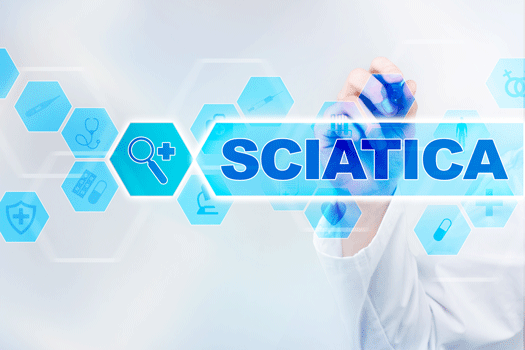
Unless symptoms are potentially life-threatening or severe, most people with sciatica are advised to try nonsurgical treatments first—typically for about 6–8 months. If leg pain, numbness, and other frequently experienced sciatica symptoms are not going away, surgery may be recommended. The goal with any surgery for sciatic nerve pain is to significantly reduce or entirely eliminate discomfort. This article discusses the topic of how to relieve sciatica pain, with particular attention to whether surgery can provide such relief.
Leg and Lower Body Symptoms Are Usually Relieved
Because the sciatic nerve starts at the end of the spine, patients usually experience leg pain and discomfort along the nerve's pathway in lower body areas like the thighs and hips. These are the symptoms surgery for sciatica often relieves. According to Spine Health, sciatica-related back pain may not be fully resolved. Results in each individual case are largely dependent on the circumstances involved and the cause of the irritation to the sciatic nerve.
An Accurate Diagnosis Is Important
Before surgery becomes an option, there must be a structural source of sciatic nerve irritation. Possible sources of this nature include herniated discs, damaged facet joints or parts of a vertebral arch known as the lamina, and issues with spinal column bones. If soft tissue inflammation is the problem, other treatments are typically recommended.
Surgery May Be More Effective for Some Sciatica Patients
Spine Health cites research suggesting that for some sciatica patients, surgery may be more effective for relieving related pain and improving overall function than conservative treatments alone. However, for the patients evaluated, long-term outcomes were similar for both surgical and nonsurgical treatments.
Pain Relief Rates for Common Sciatica Procedures Are Fairly High
One of the most common procedures performed for lower back nerve irritation is a microdiscectomy. A microdiscectomy may relieve sciatica pain for nearly 90 percent of patients, according to research referenced by Spine Health. The purpose of this type of surgery is to remove disc material from a herniated spinal disc that is irritating the sciatic nerve.
When a laminectomy is performed to remove part of a vertebral arch, the success rate for pain relief falls between 75 and 90 percent. For facetectomies performed to remove parts of spinal facet joints that may be contributing to sciatic nerve pain, the pain relief rate is around 85 percent.
Increasing Your Odds of Responding Well to Surgery
Everybody responds differently to surgery for sciatica. That said, it is worth considering if other forms of treatment have not been effective, especially if your overall quality of life is affected. Additionally, you may be able to enhance your results with surgery by taking other steps to minimize sciatic nerve irritation post-surgery. Recommendations typically include:
• Minimizing your intake of refined carbs and other foods that tend to trigger inflammation
• Getting regular exercise to keep spine-supporting muscles strong
• Regularly checking your posture so you are not overstressing the lower back area
• Avoiding overly strenuous activities that could contribute to new sources of sciatic nerve irritation
A patient who has had a lumbar discectomy for a herniated disc may experience sciatica if the disc becomes reherniated, which often occurs if there is a large hole in the outer ring of the disc after surgery. Fortunately, there is a new treatment available. Barricaid is a device shown to reduce the risk of reherniation by closing the hole in the disc after a discectomy, and 95 percent of Barricaid patients did not undergo a reoperation due to reherniation in a 2-year study timeframe. This treatment is done immediately following the discectomy—during the same operation—and does not require any additional incisions or time in the hospital.
To learn more about the Barricaid treatment, ask your doctor or contact us at 844-288-7474.
For full benefit/risk information, please visit: https://www.barricaid.com/instructions.


Comments